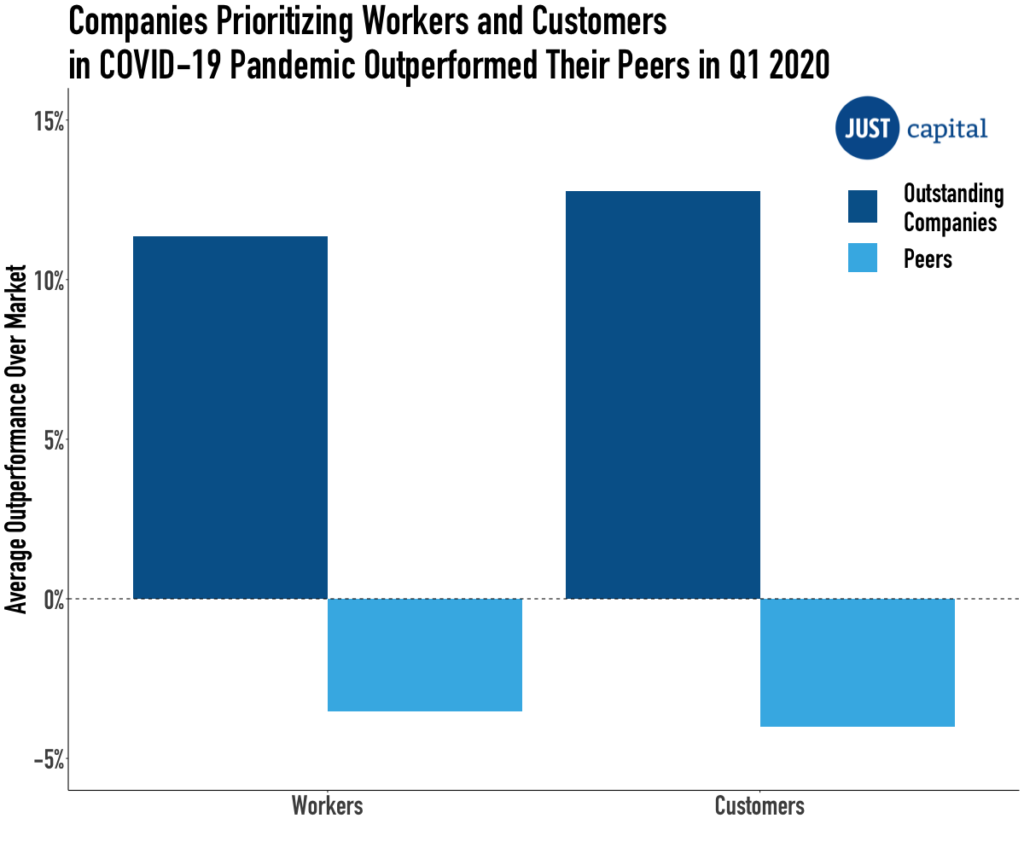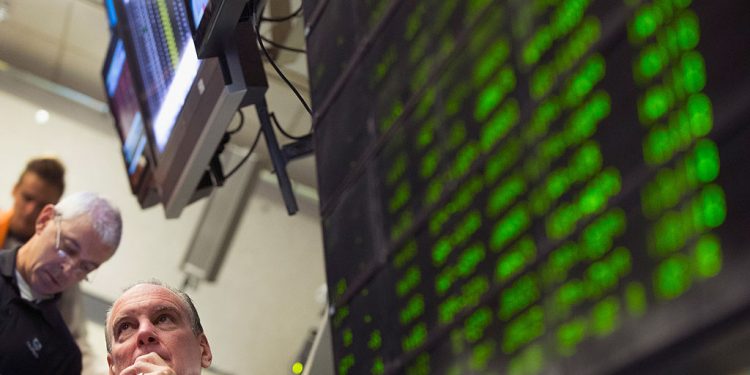JUST Chart of the Week: Companies Prioritizing Workers and Customers in Coronavirus Crisis Are Outperforming Peers
Last week we looked at whether the top-performing companies for Workers in our Rankings outperformed their peers in the first quarter of 2020 (they do), and this week we’re taking a similar look, but using data from our new COVID-19 Corporate Response Tracker.
The Tracker assesses how America’s 100 largest employers are responding to the COVID-19 pandemic across various dimensions, or “tags,” ranging from whether they provide PPE to employees, accommodate customer needs, and engage in direct community services such as food banks.
Here, we are taking a look at a subset of companies that are outstanding when it comes to how they have prioritized their workers and customers throughout the crisis.
Outstanding companies for workers (17 of 100) typically provide:
- At least 14 days of unconditional paid sick leave;
- Free personal protective equipment to their employees; and
- Financial support in the form of wage increases and/or bonuses.
Lowe’s, with about 300,000 employees across the U.S., is a prime example from this group of companies. In addition to its engagement for communities and customers – as well as other key initiatives for workers – Lowe’s gave all hourly associates a special bonus, temporarily increased the wages of frontline workers by $2 an hour, and enhanced paid leave policies.
Outstanding companies for customers (18 of 100) make industry-specific concessions, such as:
- Special opening hours for vulnerable populations;
- Deferred payments of goods and services; or
- Discounts or price cuts to customers.
An example from this group is Verizon, one of America’s largest providers of internet and wireless services. In addition to prioritizing its workers through the crisis, Verizon has waived billing charges for its low-income customers, is not terminating service of customers experiencing economic hardship, and offers more data free of charge to account for higher needs.

Looking at the market performance of these outstanding companies (above), we find that they outperformed the market in the first quarter of 2020, while the companies that put less emphasis on their workers and customers respectively underperformed. This relationship holds true when controlling for other variables such as industry and number of employees. It is important to note that it is too early to make claims about a causal relationship between market performance and a company’s response to the COVID-19 pandemic, but the relationship shown here is nevertheless encouraging.
We’re continuing to analyze how companies are performing in the market throughout the COVID-19 crisis. Check out all our coverage here, and stay tuned for next week’s chart.






